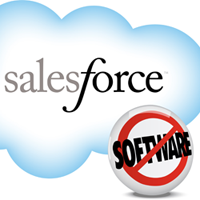How Salesforce Helped Startup Increase Revenue and Avoid Common Data Pitfalls
 As businesses grow, they tend to bring on software only as needed, taking care of immediate concerns rather than projected growth and needs.
As businesses grow, they tend to bring on software only as needed, taking care of immediate concerns rather than projected growth and needs.
Having to log in to separate systems for auto processing, lead management, email marketing and inventory, with none of them talking to each other, is beyond inefficient. It’s data clutter that affects your bottom line.
As a Customer Relationship Management (CRM) solution, Salesforce has helped many of our clients increase their bottom line by integrating systems and getting them to speak the same language, resulting in increased efficiency and stronger data management.
While there’s never a wrong time to get your data in order, planning smartly from the beginning is always best.
We often work with clients to clean up their data after they’ve been in business for a while but our most exciting and unexpected success was working with one client who leveraged Salesforce at the very beginning of their planning.
Their project included a website that leveraged Ultracart which integrated with Salesforce, allowing them to track customer order history as well as all actions taken on the site including which webinars customers watched.
We were able to customize on top of Silverpop’s native integration with Salesforce for added robustness. This gave our client the ability to send automated email reminders regarding upcoming webinars and follow up emails that differed depending on if the customer attended or missed the webinar.
We also created a form on the website for customers to submit requests by either selecting from a dropdown of common issues or sending an email. Either method submitted a case directly into Salesforce and into the appropriate queue for later resolution by Service Representatives.
Salesforce was leveraged from the beginning as our client’s center for all truth, integrating their email marketing, affiliate management, order management, order processing and customer support. This gave them solid reporting and dashboards but beyond that, it gave them an efficient system.
This efficiency allowed a brand new start up company to grow to 8-10 million dollars a year, managing 12,000 paying customers, with a team of just 5 people.
